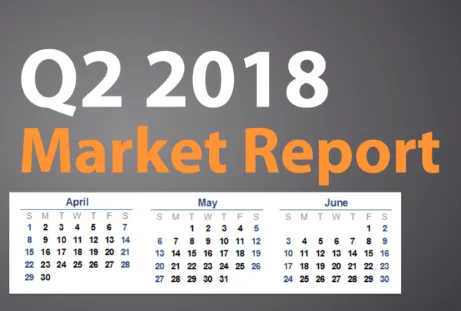The most (and least) popular reason why investors applied for a bridging loan in Q2 2018

Bridging Trends, a quarterly publication that reports on key trends in the bridging finance market and short-term loan industry, has recently released their report on the latest trends for Q2 2018—and the results are interesting, to say the least.
The biggest increase in the use of bridging loans has been for refurbishment purposes: up to 34% in Q2 from 18% in just Q1 2018. This signals that the UK bridging market, both supply and demand, is resilient, even if growth is not at the same levels as it was in 2013. Despite gloomy Brexit predictions, people are still very much in need of a product that most mortgage lenders do not offer.
In fact, refurbishment has proven to be the most popular use for obtaining bridging finance this quarter, making up almost one-third of the reasons why investors opt for such a loan.
Clearly, this surge shows that landlords and property investors aren’t going to stop expanding their portfolios anytime soon.
Whether it’s converting properties for other uses or refurbishing those in a dilapidated state, it’s clear that the need for quality housing on the UK market is still very much present.
On the other hand, the usage of bridging loans for auction purchases has seen the biggest drop—down to 7%, up from 20% just in Q1 2018. Perhaps people aren’t feeling too adventurous about purchasing auctioned properties when prices have fallen across the board and the uncertainty of Brexit is still hanging around, at least for one more year.
Where is the UK bridging finance market heading?
Despite respondents’ predictions in EY’s first study of the market in 2017, growth in the bridging loans industry has continued at a slow but steady pace.
Although we can’t compare this rate to the one we saw right after 2013, Mintel Forecasts is still optimistic that 2018 and 2019 will see growth, even if it’s at half the rate it was back then. This said, the biggest increase can already be seen in the commercial and development markets.
Another prediction that Oxford Economics had for 2017—which has now been surpassed—was that growth would fall flat or even become negative for the year right after the referendum.
However, as the Bridging Trends infographic shows, this prediction was unfounded, as total gross lending has been £197.94 million in Q2, an increase of £43.9 million from Q1 2018.
Challenges are still present; outlook is optimistic.
Without a doubt, economic uncertainty influences both borrower and lender behaviour. Another factor that comes into play is the borrowers’ perception of the bridging finance market, or how trustworthy lenders appear to investors. Last-minute regulatory changes can also cast a shadow on the growth of the short-term loan market.
Yet despite all of this, we think that the fundamental need—that of quality housing and loans for investors to create that housing—will counterbalance any turbulence that might arise.
The same Mintel forecast from 2017 showed a CAGR (compound annual growth rate) of 11% for the 2018–2022 period.
With all of this in mind, there has never been a better time to opt for a bridging loan. There are more lenders now than ever, which means that we are compelled to offer borrowers the best terms and rates that we can. Why not take a minute to inquire to see if our bridging loans are for you?
